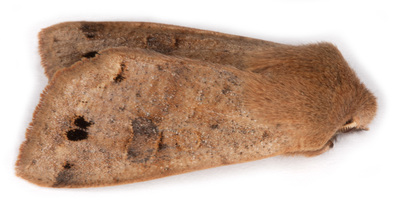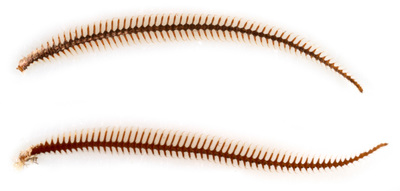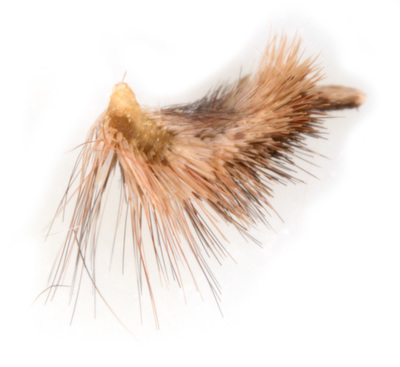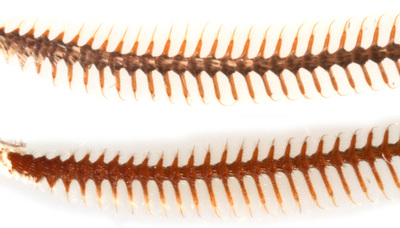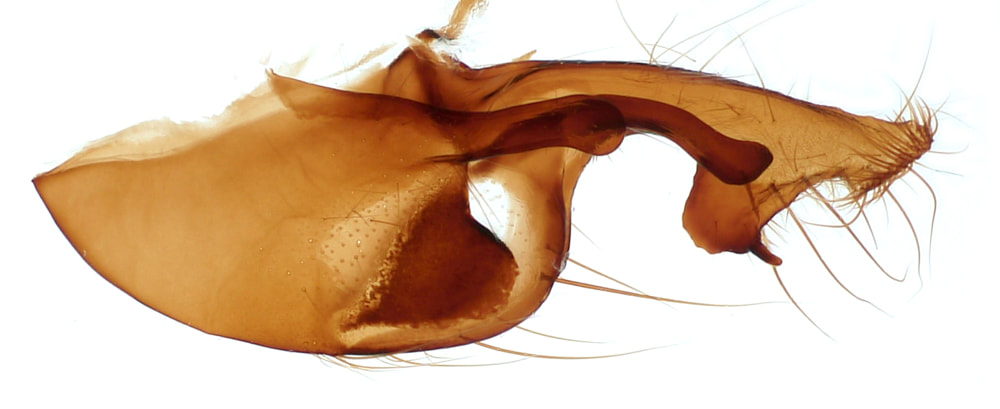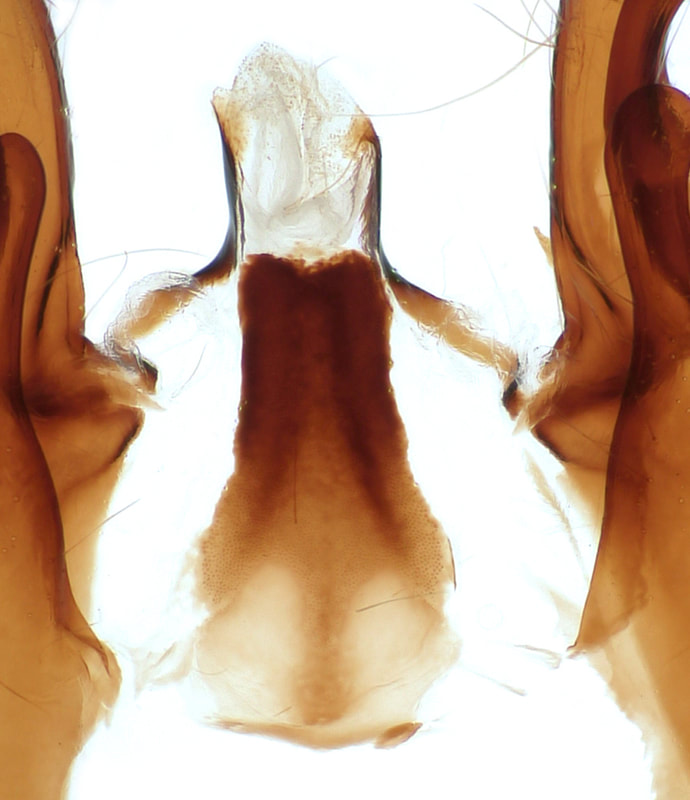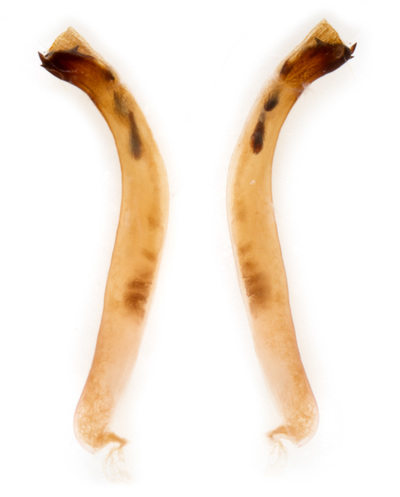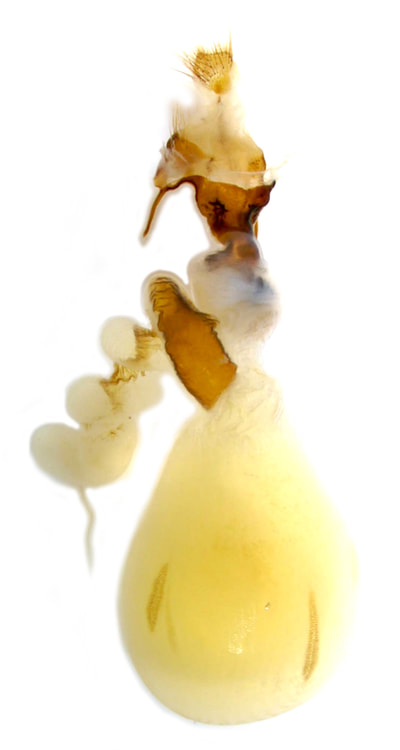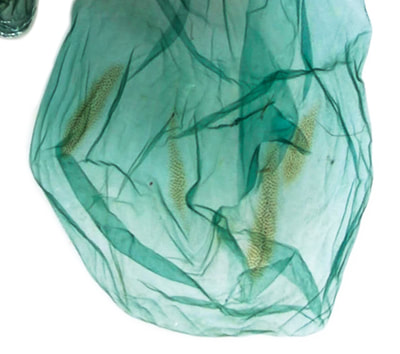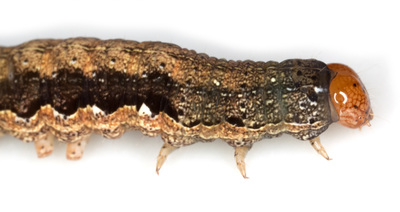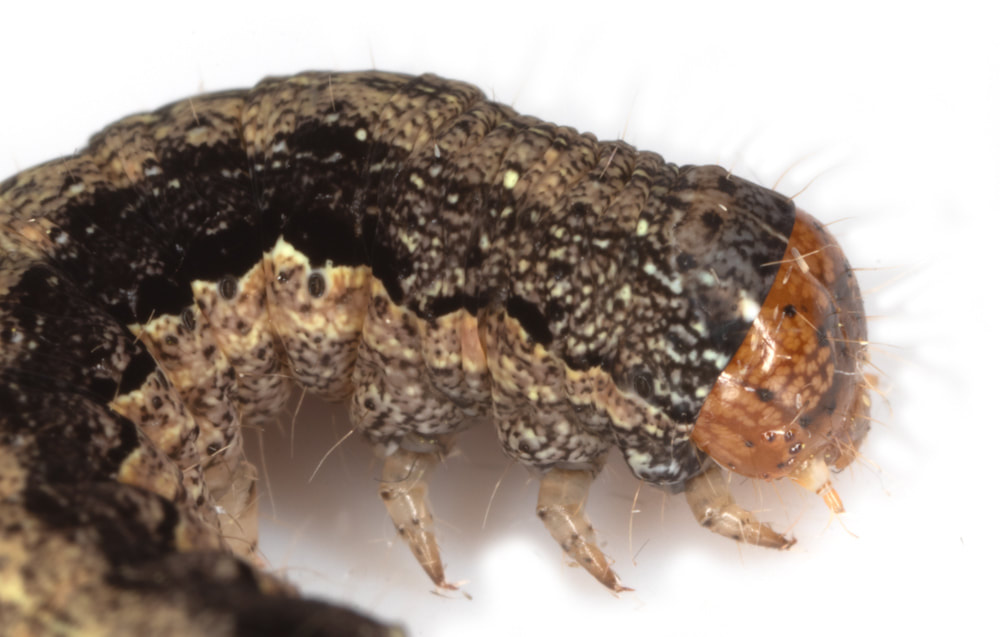73.250 Anorthoa munda (Twin-spotted Quaker)
fw: 17-20mm (Waring & Townsend), ws: 38-44mm (MBGBI9); Mar-Apr; various broadleaved trees and woody plants; common in broadleaved woodland in the southern half of England and in Wales, more local further north.
Synonym: Orthosia munda (MBGBI9, Waring & Townsend)
Synonym: Orthosia munda (MBGBI9, Waring & Townsend)
ID: Ground colour generally tawny brown but may be reddish or greyish; costa curved; a pair of prominent black spots on the proximal margin of the subterminal line about 1/3 from the costa are usually sufficient to identify this species. Male antennae bipectinate, female antennae shortly bipectinate. The twin-spots are occasionally brown, faint or absent.
|
§1 Bishops Stortford, Hertfordshire; 21/03/2012; male; fw 20.0mm
§2 Bishops Stortford, Hertfordshire; 21/03/2012; male; fw 18.0mm §3 Forest of Dean, Gloucestershire; 03/05/2013; male; fw 18.5mm §4 Hockley Woods, Essex; 17/03/2014; male; fw 19.0mm §5 Hockley Woods, Essex; 23/03/2015; male; fw 18.8mm §6 Hockley Woods, Essex; 23/03/2015; male; fw 18.8mm §7 Foulden Common, Norfolk; 11/04/2016; male; 18.4mm §8 Bampton Grange, Cumbria; 29/03/2017; female; fw 18.2mm §9 Cliburn Moss, Cumbria; 22/03/2022; male; fw 18.9mm §10 Cliburn Moss, Cumbria; 22/03/2022; male; fw 18.6mm All images © Chris Lewis |
Larva 1 Newgale, Pembrokeshire; 17/05/2011
Larva 2 Belfairs NR, Leigh-on-sea; 08/05/2020 |
Page published 07/08/2016 (§1-6/L1) | §7 added 12/04/2017 | §8 added 01/04/2018 | L2 added 15/01/2021 | §9&10 added 21/05/2022




